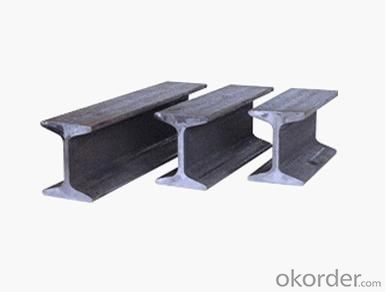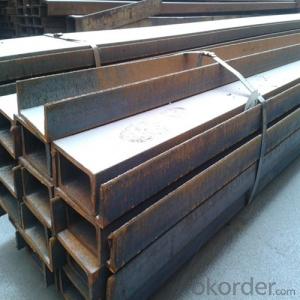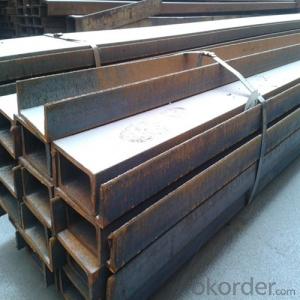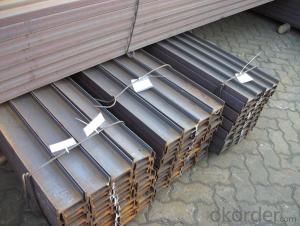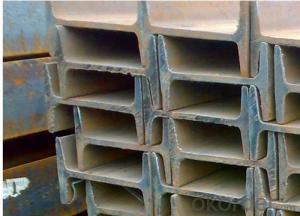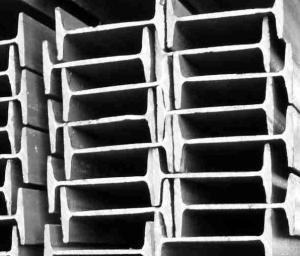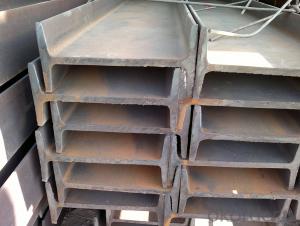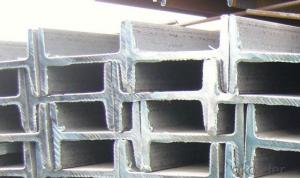Boron Steel I-Beam Element
- Loading Port:
- China main port
- Payment Terms:
- TT or LC
- Min Order Qty:
- 3000 PCS
- Supply Capability:
- 400000 PCS/month
OKorder Service Pledge
OKorder Financial Service
You Might Also Like
OKorder is offering high quality Boron Steel I-Beams at great prices with worldwide shipping. Our supplier is a world-class manufacturer of steel, with our products utilized the world over. OKorder annually supplies products to European, North American and Asian markets. We provide quotations within 24 hours of receiving an inquiry and guarantee competitive prices.
Product Applications:
Boron Steel I-Beams are ideal for structural applications and are widely used in the construction of buildings and bridges, and the manufacturing, petrochemical, and transportation industries.
Product Advantages:
OKorder's Boron Steel I-Beams are durable, strong, and resist corrosion.
Main Product Features:
· Premium quality
· Prompt delivery & seaworthy packing (30 days after receiving deposit)
· Corrosion resistance
· Can be recycled and reused
· Mill test certification
· Professional Service
· Competitive pricing
Product Specifications:
Grade: Q235, SS400, ST37-2, S235JR
Dimensions:
Size: 80mm – 300mm
Length: 6m, 9m, 12m
Packaging: Export packing, nude packing, bundled
FAQ:
Q1: Why buy Materials & Equipment from OKorder.com?
A1: All products offered byOKorder.com are carefully selected from China's most reliable manufacturing enterprises. Through its ISO certifications, OKorder.com adheres to the highest standards and a commitment to supply chain safety and customer satisfaction.
Q2: How do we guarantee the quality of our products?
A2: We have established an advanced quality management system which conducts strict quality tests at every step, from raw materials to the final product. At the same time, we provide extensive follow-up service assurances as required.
Q3: How soon can we receive the product after purchase?
A3: Within three days of placing an order, we will begin production. The specific shipping date is dependent upon international and government factors, but is typically 7 to 10 workdays.
Q4: What makes stainless steel stainless?
A4: Stainless steel must contain at least 10.5 % chromium. It is this element that reacts with the oxygen in the air to form a complex chrome-oxide surface layer that is invisible but strong enough to prevent further oxygen from "staining" (rusting) the surface. Higher levels of chromium and the addition of other alloying elements such as nickel and molybdenum enhance this surface layer and improve the corrosion resistance of the stainless material.
Q5: Can stainless steel rust?
A5: Stainless does not "rust" as you think of regular steel rusting with a red oxide on the surface that flakes off. If you see red rust it is probably due to some iron particles that have contaminated the surface of the stainless steel and it is these iron particles that are rusting. Look at the source of the rusting and see if you can remove it from the surface.
Images:
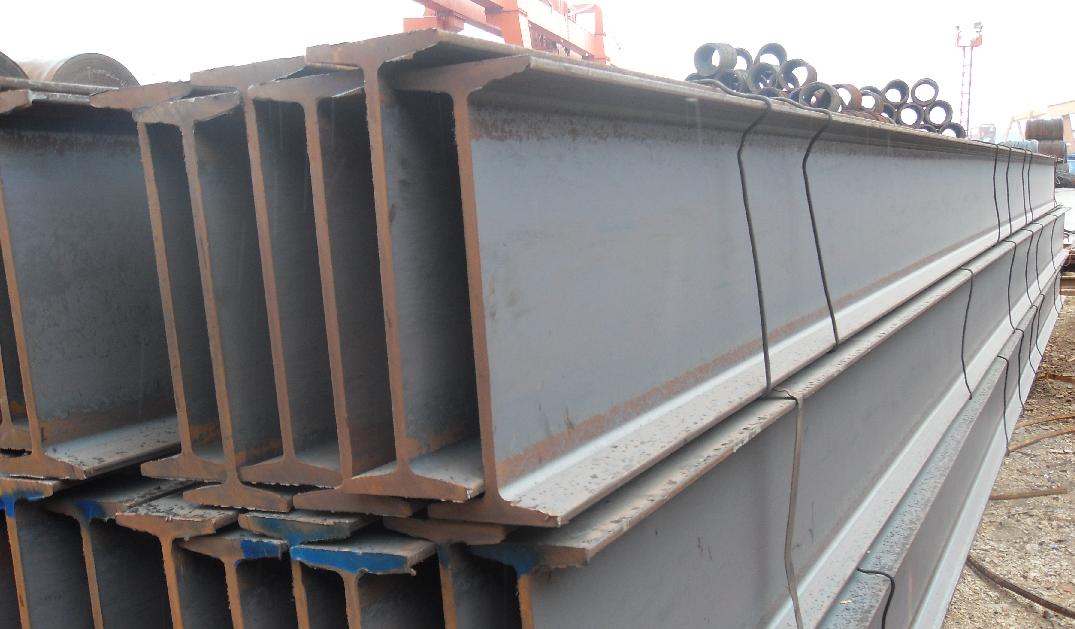
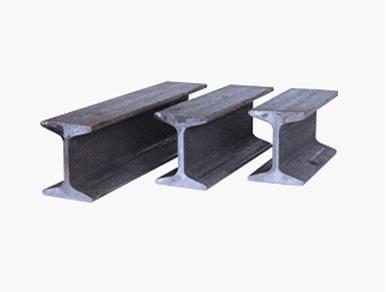
- Q: What are the advantages of using steel I-beams in open floor plans?
- There are several advantages to using steel I-beams in open floor plans. Firstly, steel I-beams are incredibly strong and durable, making them ideal for supporting the weight of the structure in an open floor plan. This allows for larger open spaces without the need for additional supporting columns or walls, creating a more spacious and flexible layout. Additionally, steel I-beams have a high strength-to-weight ratio, meaning they can support heavy loads while being relatively lightweight themselves. This makes them a cost-effective choice as they require less material and are easier to handle during the construction process. Another advantage of steel I-beams is their versatility. They can be easily customized and fabricated to fit the specific requirements of an open floor plan design. This allows for greater design freedom and creativity, as architects and designers can create unique and visually appealing spaces without compromising on structural integrity. Moreover, steel I-beams have excellent fire resistance properties compared to other construction materials. In the event of a fire, steel maintains its strength and integrity for a longer period of time, providing increased safety for occupants and allowing more time for evacuation or firefighting efforts. Lastly, steel I-beams are highly sustainable and environmentally friendly. Steel is a recyclable material, and the use of steel I-beams in open floor plans can contribute to reducing environmental impact by minimizing construction waste and supporting sustainable building practices. In conclusion, the advantages of using steel I-beams in open floor plans include their strength, durability, cost-effectiveness, versatility, fire resistance, and sustainability. These benefits make steel I-beams a popular choice for creating spacious, flexible, and aesthetically pleasing open floor plan designs.
- Q: What are the cost considerations when using steel I-beams?
- When utilizing steel I-beams, there are various cost factors that need to be taken into account. Firstly, the cost of the steel itself plays a significant role. The price of steel can fluctuate depending on factors such as the steel grade, required quantity, and current market conditions. It is crucial to assess the cost of the steel beams in relation to the overall project budget. Aside from the steel cost, there are additional expenses to consider. The transportation and delivery costs of the steel beams should be included in the overall project budget. The size and weight of the beams can impact the shipping expenses, so it is important to plan for these costs accordingly. Moreover, the installation expenses of steel I-beams should be factored in. While steel beams are renowned for their strength and durability, skilled labor is required for their installation. This may involve hiring specialized contractors or construction teams, which can contribute to the overall project costs. It is vital to evaluate the expertise and experience necessary for the proper installation of steel I-beams and incorporate these costs into the project budget. Furthermore, the long-term costs associated with steel I-beams should be considered. Although steel is known for being durable and requiring low maintenance, it can still be susceptible to corrosion and wear over time. Implementing protective coatings or regular maintenance may be necessary to prolong the lifespan of the beams. These maintenance costs should be taken into account when assessing the overall cost-effectiveness of using steel I-beams. Lastly, it is crucial to evaluate the cost of alternative materials. While steel I-beams are frequently used in construction due to their strength and versatility, there may be alternative materials that offer similar attributes at a lower cost. It is essential to evaluate the specific project requirements and explore different material options to ensure the most cost-effective solution. In conclusion, the cost considerations when using steel I-beams encompass the price of the steel itself, transportation and delivery costs, installation expenses, long-term maintenance costs, and the evaluation of alternative materials. By carefully evaluating these factors, informed decisions can be made regarding the use of steel I-beams in construction projects.
- Q: Are steel I-beams suitable for supporting heavy machinery and equipment?
- Indeed, steel I-beams prove to be a fitting solution for bolstering and upholding heavy machinery and equipment. Renowned for their robustness, longevity, and adeptness at bearing substantial loads, these beams stand as an optimal selection when it comes to sustaining weighty burdens. They possess a design that effectively disperses weight along their entire span, thereby proffering stability and thwarting any possibility of structural collapse. Furthermore, steel I-beams boast the capacity to be tailored and engineered to conform precisely to the load prerequisites, thereby guaranteeing the requisite strength and reinforcement for supporting heavy machinery and equipment.
- Q: Can steel I-beams be used for pedestrian bridges?
- Absolutely, pedestrian bridges can certainly utilize steel I-beams. The construction industry commonly employs steel I-beams due to their robustness, longevity, and capacity to sustain substantial loads. In the creation of pedestrian bridges, engineers meticulously analyze multiple aspects, such as projected pedestrian traffic, span length, and safety prerequisites. Steel I-beams are frequently favored for pedestrian bridges as they furnish the requisite strength to bear the weight of pedestrians, ensuring the bridge's stability. Moreover, steel I-beams offer versatility and straightforward fabrication and installation procedures, rendering them an appropriate option for constructing pedestrian bridges.
- Q: Can steel I-beams be used in residential high-rise building construction?
- Residential high-rise buildings can indeed incorporate steel I-beams. Their exceptional strength and durability make them a common choice in constructing such buildings. They possess remarkable load-bearing capabilities, which are essential for supporting multiple floors and accommodating diverse architectural designs. Furthermore, steel I-beams exhibit fire resistance and can endure severe weather conditions, rendering them a dependable option for high-rise construction. Additionally, steel qualifies as a sustainable and recyclable material, aligning perfectly with the increasing focus on environmentally friendly building practices. Consequently, steel I-beams emerge as a favored selection for residential high-rise building construction.
- Q: What is the theoretical weight per metric ton of 30# I-beam?
- Commonly used hot rolled I-beam specifications are 28# and 32#, 30# is relatively new specifications.
- Q: Can steel I-beams be used for industrial platforms?
- Yes, steel I-beams can be used for industrial platforms. Steel I-beams are a popular choice for industrial platforms due to their strength and durability. They are capable of supporting heavy loads and are resistant to bending or warping, making them ideal for industrial applications. Additionally, steel I-beams can be easily fabricated and customized to specific size and shape requirements, allowing for flexibility in design. Overall, steel I-beams are a reliable and cost-effective option for constructing industrial platforms.
- Q: Are steel I-beams suitable for airport or stadium construction?
- Yes, steel I-beams are suitable for airport or stadium construction. Steel I-beams are commonly used in construction projects due to their strength and durability. They are capable of supporting heavy loads and are resistant to bending or warping, which makes them ideal for large structures like airports or stadiums that require a strong framework. Additionally, steel I-beams can be easily fabricated and customized to meet specific design requirements, allowing for flexibility in construction. Moreover, steel is a sustainable material as it can be recycled, making it a preferred choice for environmentally conscious projects. Overall, steel I-beams are an excellent choice for airport or stadium construction due to their strength, durability, versatility, and sustainability.
- Q: What kind of low carbon steel or medium carbon steel are they?
- Low carbon steel (low carbon steel) as the carbon content of less than 0.25% of the carbon steel, because of its low strength, low hardness and soft, it is also called the mild steel. It includes most of the ordinary carbon structural steel and some high-quality carbon structural steel, most of which are not used for engineering structural parts without heat treatment. Some of them are used for wear-resistant mechanical parts after carburizing and other heat treatment.
- Q: What are the common connections used with steel I-beams?
- Construction and engineering projects often utilize various connections for steel I-beams. These connections aim to enhance stability, strength, and rigidity of the overall structure. A frequently employed connection is welding. This method involves welding the ends of the I-beams together, resulting in a solid and continuous joint. Welded connections are favored for their robustness and durability, as they create a seamless bond between the beams. However, skilled welding professionals are necessary for this technique, and it can be time-consuming. Another popular connection method is using bolts. This approach involves securing the I-beams together using bolts and nuts. Bolted connections are well-liked due to their ease of installation and versatility. They can be easily adjusted or dismantled if required, making them suitable for temporary structures or situations that demand flexibility. However, bolted connections may not offer the same level of strength as welded connections, and regular checks for tightness are needed. In certain cases, a combination of welding and bolting, known as a bolted and welded connection, may be utilized. This involves welding the ends of the I-beams together and then bolting additional plates or brackets to reinforce the connection. Bolted and welded connections provide the benefits of both methods, offering both strength and adjustability. Apart from welding and bolting, there are other connection types available, such as riveting and the use of specialized connectors like shear plates or cleats. Riveting involves joining the beams together using metal rivets, while shear plates and cleats are pre-fabricated connectors that can be bolted or welded to the beams. The choice of connection method depends on factors such as load requirements, structural design, construction timeline, and budget. Each connection type has its own advantages and disadvantages, and it is crucial to consult with structural engineers and professionals to determine the most suitable connection method for a specific project.
Send your message to us
Boron Steel I-Beam Element
- Loading Port:
- China main port
- Payment Terms:
- TT or LC
- Min Order Qty:
- 3000 PCS
- Supply Capability:
- 400000 PCS/month
OKorder Service Pledge
OKorder Financial Service
Similar products
Hot products
Hot Searches
Related keywords


